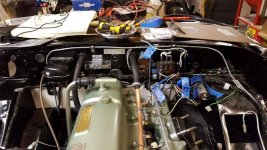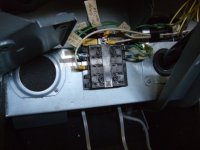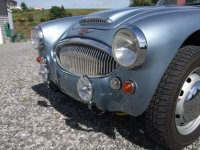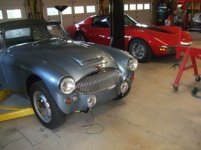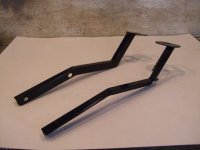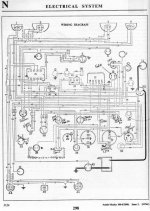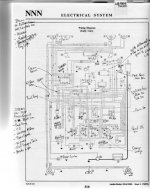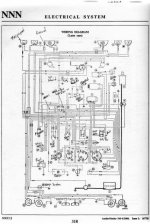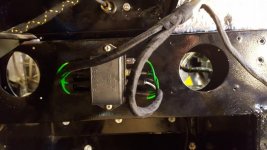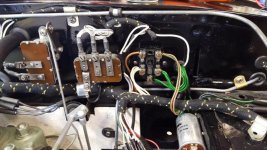RestoreThemAll
Jedi Warrior
Offline
I'm not great with wiring. Can someone verify that I have the power path correct on my BJ7?
1) A wire from the starter solenoid goes to the control box A connection on its way to the 50 amp fuse.
2) There is continuity between the A connection and the A1 connection on the control box. From the control box A1 a line goes to the light switch then the ignition switch.
3) Turn the key; from ignition switch to coil then fuse box 35 amp fuse (on the diagram)...Ignition switch to fuse box and a separate line to coil (both old and new wiring harnesses). No real difference between these two paths, diagram vs wire, correct?
When the key is turned the 35 amp fuse is hot. The OD relay and fuel pump are also hot before the fuse.
1) A wire from the starter solenoid goes to the control box A connection on its way to the 50 amp fuse.
2) There is continuity between the A connection and the A1 connection on the control box. From the control box A1 a line goes to the light switch then the ignition switch.
3) Turn the key; from ignition switch to coil then fuse box 35 amp fuse (on the diagram)...Ignition switch to fuse box and a separate line to coil (both old and new wiring harnesses). No real difference between these two paths, diagram vs wire, correct?
When the key is turned the 35 amp fuse is hot. The OD relay and fuel pump are also hot before the fuse.

 Hi Guest!
Hi Guest!

 smilie in place of the real @
smilie in place of the real @
 Pretty Please - add it to our Events forum(s) and add to the calendar! >>
Pretty Please - add it to our Events forum(s) and add to the calendar! >> 



